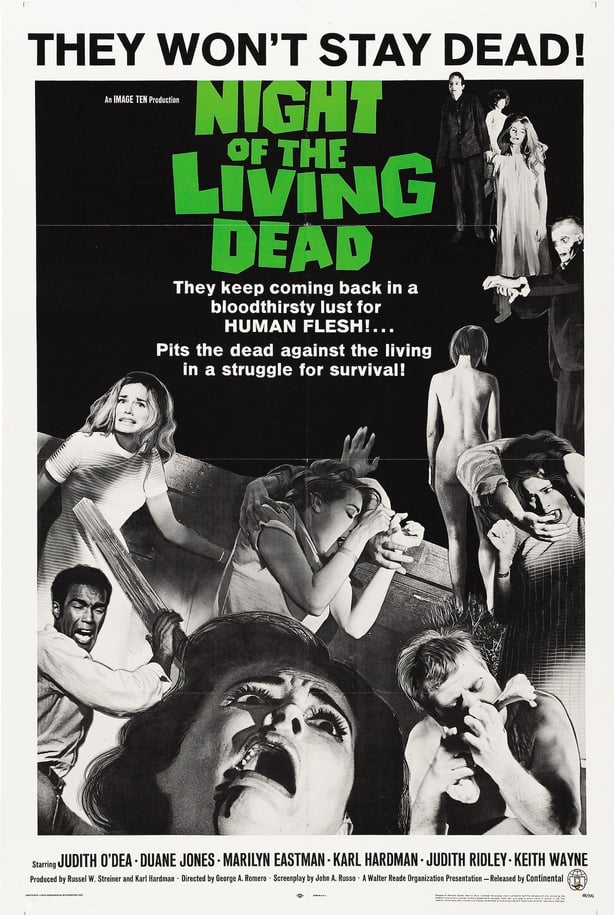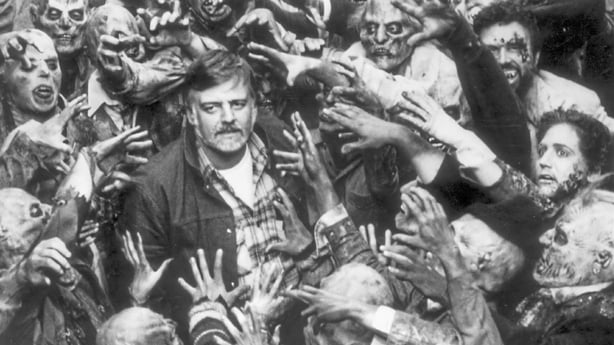For everything, there is a season. But there’s just no stopping zombies. Unless you shoot them in the head, of course. Everybody knows that. And I mean everybody.
Because something strange happened years ago: zombies went mainstream. Trends would come and go in horror cinema like the changing of the seasons. Vampires, for example, have come back from dead many times, most recently with the Twilight movies and True Blood on TV. Eventually, as is the way of things, they played themselves out - again - and retreated back into the darkness. They'll be back.

Today, we have at least four zombie-themed TV series, of which one, The Walking Dead, is one of the most successful shows created for television, like ever. The dead they just keep on trucking, stumbling, shuffling, and even running, thanks to Brit director Danny Boyle back in 2002. The infected in Boyle’s 28 Days Later were really proto-zombies, by any other name. The modern cultural outbreak of the undead can be traced back to 2004, with zom-com Shaun Of The Dead and director Zack Snyder’s surprisingly excellent rethread of Dawn Of The Dead. The latter was a remake of one of the greatest horror films of the 1970s, directed by the man which we can genuinely label Patient Zero: Mr. George A. Romero. A man known affectionately not only as the father of the zombie, but even the grandfather of independent box office filmmaking, when in 1968 he unleashed Night Of The Living Dead upon the world
Romero’s black and white siege story, in which a disparate group of people are thrown together in a remote farmhouse, surrounded by hordes of the flesh-eating famished, cost a mere $140,000, and ultimately earned $30 million worldwide on its initial release - that’s a massive $226 million in today’s money.
NOTLD was not George’s first time around the block. Born in the Bronx, NY, he knew his way around a Bolex camera thanks to many years of experience shooting industrial films and commercials out of his college town of Pittsburgh, then America's third largest industrial city and, like future Pittsburgh son M. Night Shyamalan, the setting of almost all his following movies.
We need your consent to load this rte-player contentWe use rte-player to manage extra content that can set cookies on your device and collect data about your activity. Please review their details and accept them to load the content.Manage Preferences
LISTEN: Composers Matthew Nolan and Stephen Shannon on re-imagining the film score for Night Of The Living Dead, via Arena
Taking tonal inspiration from Richard Matheson’s novel I Am Legend (yes, that was a Will Smith movie, but many decades later), George overcame any budgetary limitations by always using a wide angle lens, throwing out the gothic elements of horror and bringing in an everyday newsreel reality. Inbetween close quarter fighting, our cast watch TV for news of what’s happening in the rest of the world. These straight-faced news reports and clips of casual carnage across America are a true narrative stroke of genius from Romero and writer John A. Russo - any parallels to the shocking footage from the very real war in Vietnam, being broadcast nightly on US TV screens back in '68, are entirely intentional.
Cast alongside Judith O’Dea, George hired a memorable Duane Jones to play the male lead. Cast simply as he was the best actor, he was also an African American. Even in 1968 It was a rare occurance to see a black actor in the lead of any film who wasn’t Sidney Poitier. This - George insists - unintended confluence of social commentary, politics and war deftly executed in what was ostensibly just intended as a genre picture has given his film a long lasting relevance.

The afterlife of NOTLD brings with it a cautionary tale. Though the film went on to generate oodles of money at the bo- office, George didn’t see a lot of it. Originally shot with the working title of Night Of The Flesh Eaters, it retained this name on the initial run of prints from the lab. (Sidebar: the term ‘zombie’ is not even used in the film. Much like it's not used today in The Walking Dead). A decision was quickly made to change the name to Night Of The Living Dead, for its nationwide release. Alas, somebody messed up - big time - and neglected to include a copyright tag on the new title card. According to the law of the land, this rendered the movie in the public domain straight out of the gate. Such a mistake would send any artist screaming into the night, but George was ultimately philosophical about it, as his film got wide exposure across the world, in no small part due to its free agency. Its relentless shelf life gave him the opportunity in the following years to make no less than five sequels - of which 1978’s Dawn Of The Dead is the undisputed pinnacle. He made some other great movies that didn't have zombies in them - Stephen King collaboration Creepshow, and a killer vampire movie called Martin, for example - but the dead kept rising.
READ: Could you survive a zombie apocalypse?
George A. Romero died in 2017 - as far as we know, he's still dead. And can experience for yourself the 50th anniversary of that terrifying night in Pittsburgh in Dublin’s National Concert Hall on October 4th, complete with a 'reimagined' live score from composers Matthew Nolan and Stephen Shannon. Just be sure to lock the doors, bolt the windows, and, you know, always aim for the head.
The 50th Anniversary Screening of Night Of The Living Dead, with live musical accompaniment, takes place on October 4th at the National Concert Hall, Dublin - more details here.


